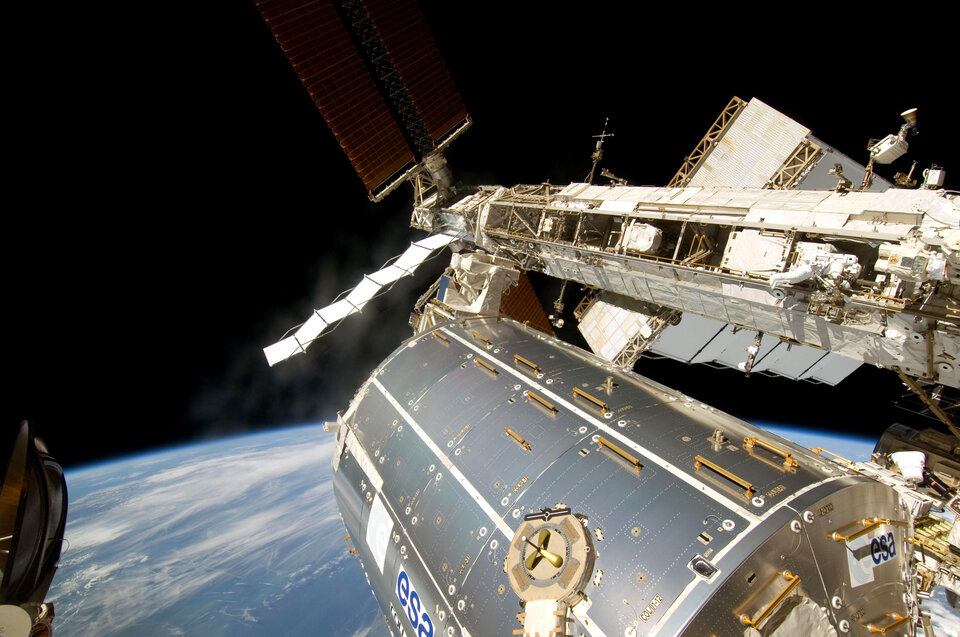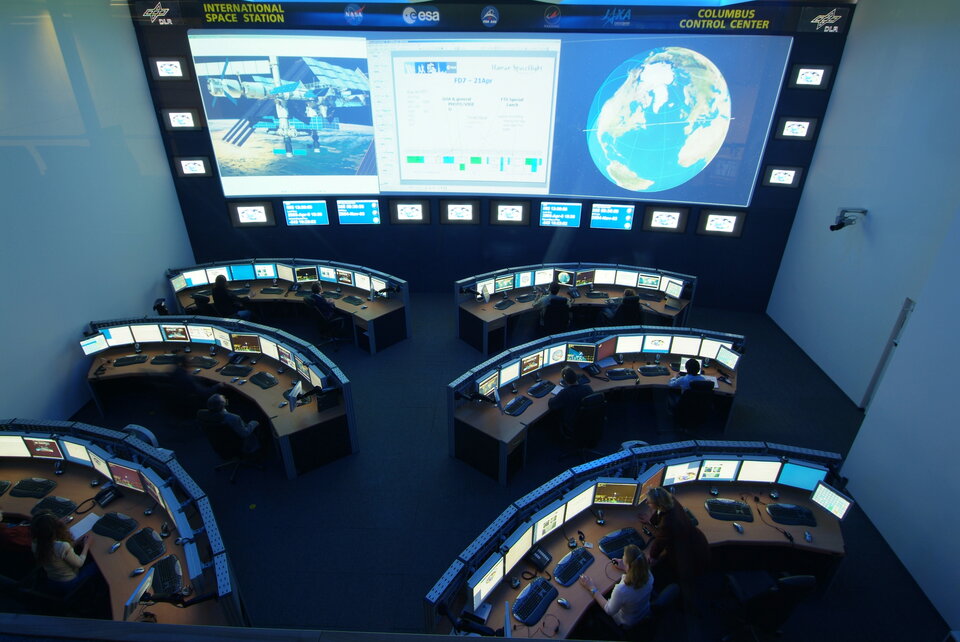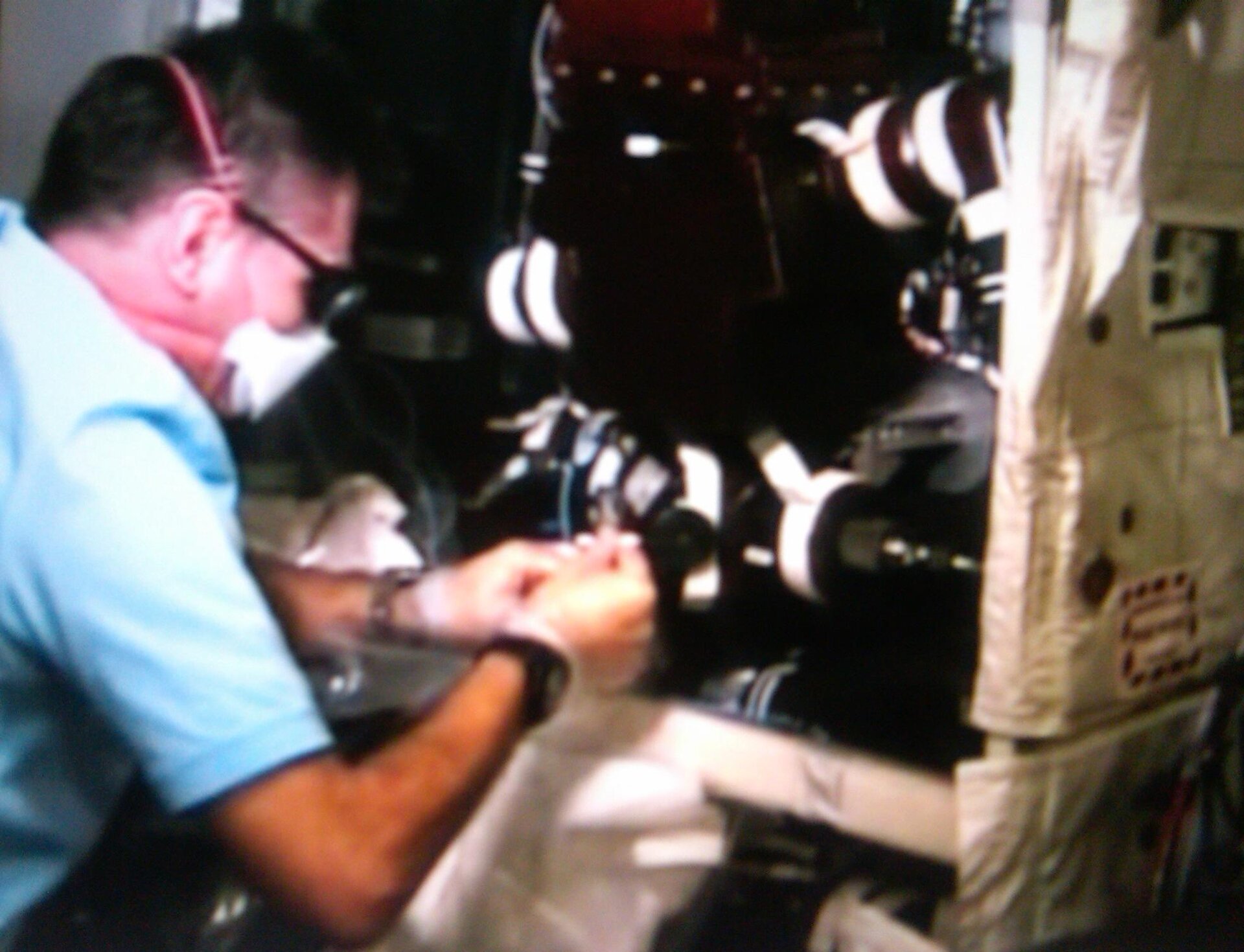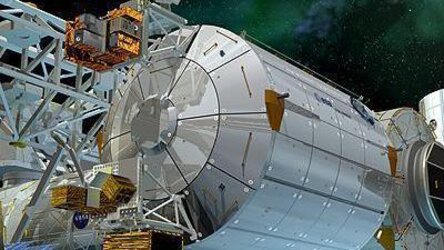Nespoli performs hot-swap of faulty valve on Columbus
A joint effort is combining sophisticated engineering analysis on the ground with old-fashioned hands-on work in space after ESA astronaut Paolo Nespoli undertook the complex installation of a replacement water valve in ESA's Columbus science laboratory.
ESA's Columbus module on the International Space Station carries a number of life-support systems, including the Thermal Control System, which cools all the equipment and scientific payloads in the orbiting research module.
The thermal system has multiple valves that control the cold water flowing through pipes. The water pipes run from Columbus to the Station's Node-2, where heat exchangers cool the water using radiators. The cooled water then flows back into Columbus.
What went wrong

In 2010, one of the water valves experienced problems and was inspected several times by Station astronauts to assist engineers with troubleshooting.
Finally, in September last year, the suspect No. 8 Water ON-OFF Valve (WOOV) failed to react to ground commands and stopped working completely.
"WOOV No. 8 can be commanded remotely by the crew or from ground as well as manually operated by the crew," explained Zoltan Szigetvari, Senior System Engineer for Columbus Thermal and Environmental Control Systems at Astrium.
The valve that failed to operate
"No. 8 failed to operate even after crew intervention and it was decided to replace it by a manifold, which will allow continued nominal operation of Columbus, and download the failed valve for investigation," he added.
The crew also reported traces of an unknown substance seeping out of the valve body and the insulation shell.
Replacement required an in-orbit repair job, and it was decided to return the faulty valve to Earth for detailed analysis.
A thorough troubleshooting plan was mapped out, aiming to identify the root cause of the valve jamming and the nature of the contamination.

"The contamination could not be explained and was declared toxicity level 2, meaning that the astronauts should not come into contact with it," said Eugenio Gargioli, Engineering Support Manager for Columbus at Thales Alenia Space.
"Once we examine it, and collect samples of the unknown substance for detailed chemical analysis, we can establish a strategy for treating potential failures and provide instructions to the crew for handling the deposits that have been detected at this and also on other, similar, Columbus valves."
As a replacement, Thales Alenia Space made a new manifold, which was launched on Shuttle Discovery on the STS-133 mission on 24 February.
Can we fix it? Yes we can

On 27 February, ESA astronaut Paolo Nespoli rolled up his sleeves to work on what was termed 'major in-flight maintenance' – an hours-long repair job requiring tight coordination between the astronaut in space and engineers at ESA's Columbus Control Centre, near Munich, with continuous voice and video contact.
"The main repair included a procedure of some 80 steps," said Cesare Capararo, of ALTEC, Lead Increment Flight Director for Columbus and responsible for overseeing the repair.
"Each step had to be carefully checked before, during and after execution by Paolo and the ground team due to the complexity of performing maintenance on a running system."
Detailed engineering analysis
With the job complete, the faulty valve was packed for return to Earth on the same Shuttle. After arrival at NASA's Kennedy Space Center on 9 March, it was shipped to the Astrium facility in Bremen, Germany, where Columbus was built, for analysis by engineers from Thales Alenia Space, Astrium and ESA.
"We will have the results very soon, which will help to determine the cause," said ESA's Roland Luettgens, Mission Director at Columbus Control Centre.
"Columbus must operate several more years and therefore it's important to know the cause and ensure that we can work together with the crews for this type of complex maintenance."






